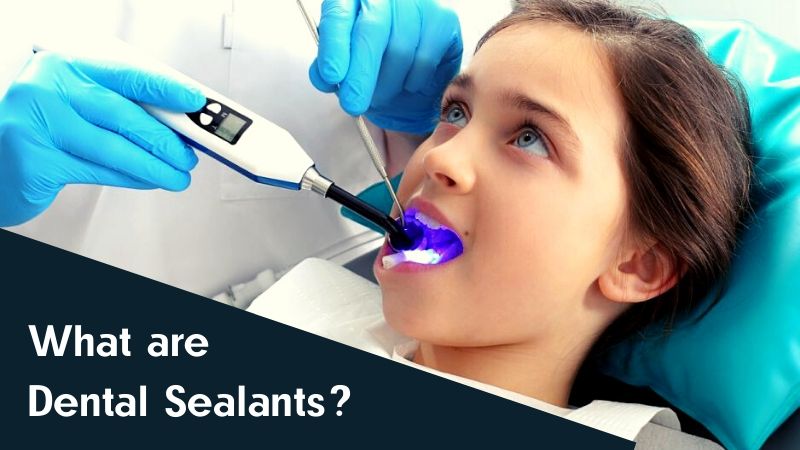What are Dental Sealants?

Dental sealants are plastic-based coatings that are usually applied to the chewing (occlusal) surface of permanent small and large molars to protect them from caries. They are mainly applied to children’s teeth.
Why are dental sealants applied to the surface of the teeth?
The chewing surface of the small and large molars has recesses (grooves), which make it vulnerable to caries. Such grooves are sometimes quite deep and may be narrower than the bristles of the toothbrush, making them difficult to clean. Gradually, plaque accumulates in them, the bacteria contained in it form acid, which destroys the enamel and can cause tooth decay. The use of fluorides will help prevent tooth decay and protect all tooth surfaces; dental sealants provide additional protection for areas containing grooves, evenly covering their surface and making them inaccessible to microorganisms.
When are dental sealants applied?
For the first time, dental sealants are usually applied to the grooves of the first permanent large molar tooth, as soon as the chewing surface of the tooth is completely cut through the gum. This tooth grows after milk teeth. Sealant covering the chewing (occlusal) surface of such teeth provides their reliable protection. Small and large molars continue to erupt until eleven to thirteen years old, and the chewing surfaces of such teeth may be covered with sealant after they have completely appeared over the gum.
Are dental sealants applied only to the chewing surfaces of large and small molars?
Dental sealants are usually applied to the chewing surface of such teeth since it usually has deep grooves. Dental sealants sometimes treat surfaces and other permanent teeth, if they have indentations or pits, in order to protect them. In children, the first (milk) large molars also sometimes have grooves on which it will be useful to apply dental sealant. In such a situation, the dentist or dental hygienist may recommend applying dental sealants to the masticatory surface of such primary teeth. By the way, dental examinations shall be required on original entry into school and in grades three and seven. Dental consent form can be downloaded from the official website of your dental clinic.
Can dental sealants be applied to adult teeth?
Yes, but this happens less frequently. Dental sealants are sometimes applied to adults on teeth exposed to tooth decay, into deep grooves and indentations in which there are no fillings and dental sealants.
What do dental sealants look like?
Dental sealants can be transparent, white or have a slight shade, depending on the particular type of sealant.
Procedure for applying dental sealants
First of all, the dentist or dental hygienist thoroughly cleans the tooth surface with the help of a special paste and a tool with a rotating head. Then the tooth is washed with water and dried. After that, an acid solution is applied to the furrowed chewing surface of the tooth for several seconds, which is then washed off. This creates microscopic depressions and makes the surface rougher than the surrounding enamel, as can be observed with a microscope. The rough surface and microscopic recesses allow the dental sealant to better fix on the tooth. After repeated drying, a liquid dental sealant is applied to the tooth, which hardens under the action of special light radiation. Sometimes a two-component dental sealant can be used that does not require radiation. After hardening, the dental sealant becomes like a hard plastic or varnish coating – from now on you can chew on the treated tooth again.
How much do dental sealants serve?
Dental sealants have been used and have proven effective since the 1970s. The results of many studies prove the effectiveness of sealants in preventing caries on the chewing (occlusal) surface of the teeth. Dental sealants can last for many years. If necessary, you can cover the tooth with a new layer of sealant.
Is fluoride required after applying dental sealants?
Yes. Dental sealants protect only the part of the tooth surface on which they are applied. Fluorides help protect the entire surface of the tooth from the formation of carious cavities.
This article is intended to broaden the knowledge and understanding of the general issues of oral hygiene. The article does not replace professional medical advice of a specialist, and cannot be used to make a decision on the diagnosis and treatment. Always seek the advice of a dentist or other qualified professional on all questions regarding your health status and the treatment you are considering.
Category: Health and Wellness
Tags: dental sealants, Dentist, teens, teeth health